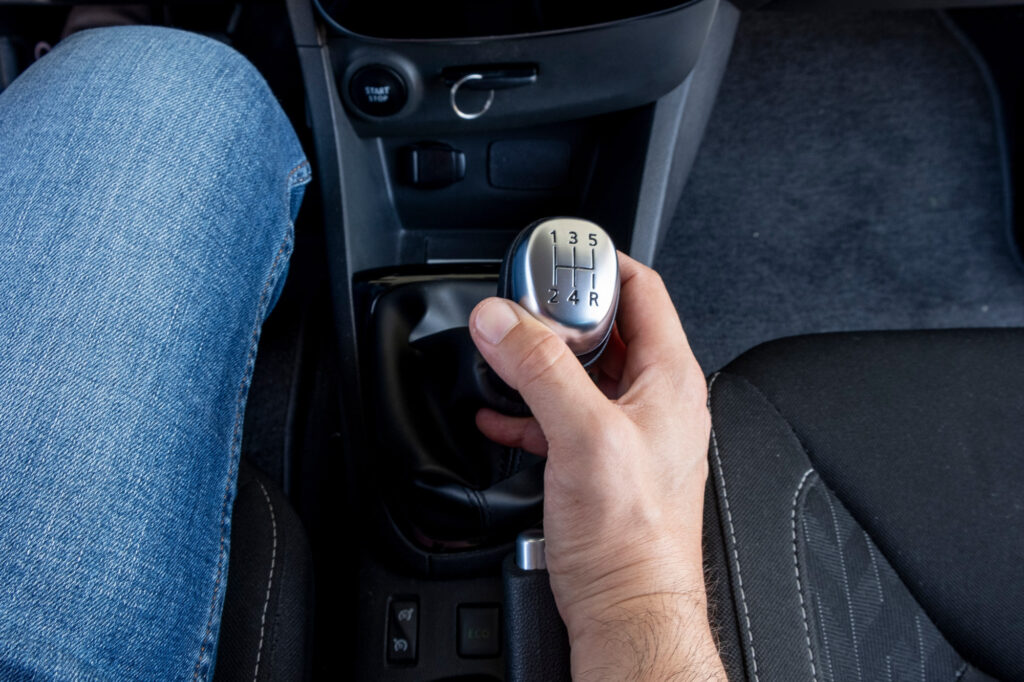If you own a vehicle with a manual transmission, be wary of money shifting. Possibly a result of inoperative auto parts, it can inflict extensive damage to the engine, leading to costly repairs.
But what is a money shift, and how likely is it to happen? What makes it so dangerous?
What is Money Shifting?
Money shifting happens when you accidentally shift to a lower gear than intended, damaging the engine in the process. People who are not used to driving manual transmission vehicles are the ones most likely to do it.

Downshifting at inappropriate speeds is bad for the engine because it causes over-revving. If the engine’s RPM, or rotations per minute, is too high for the gear you’ve shifted to, it puts incredible strain on various engine components. This can destroy them, leading to engine failure.
Modern engines are equipped with electronic rev limiters that cut off the injectors or de-throttle the engine when it reaches a certain RPM. However, this doesn’t completely eliminate the risk of damage if the engine is already spinning too fast when a lower gear is engaged and the engine already has a lot of wear.
Also, advances in materials and engineering make modern engines more robust, which can help them withstand higher stresses than older engines.
Is Money Shifting Possible with Automatic Vehicles?
No, you cannot money shift with a vehicle that has an automatic transmission.
You are never in full control of the transmission system with automatic vehicles. That means it’s impossible to over-rev the engine unless there’s already something wrong with it.
The vehicle’s computer will prevent you from shifting gears if it cannot match the number of rotations per minute in the engine. So you won’t be able to downshift within certain ranges, regardless of whether you do it intentionally or not.
What Causes Money Shifting?
More often than not, money shifting occurs when inexperienced drivers shift gears incorrectly, resulting in the engine over-revving.
It’s more common for those who don’t have the shift pattern or the appropriate speeds to change gears memorized. It’s also worth noting that the faster you travel, the more likely it is for a bad shift to become a money shift.
There are some cases where money shifting occurs, not because the driver makes a mistake, but because of a mechanical issue, such as worn shifter linkages.
How Does Money Shifting Damage Your Vehicle?
Money shifting can damage your vehicle in many ways, including but not limited to engine wear, transmission failure, clutch failure, drivetrain damage, and valve collision.
Engine Wear
Money shifting is infamous for destroying engines, damaging various parts outright, or leaving lingering damage that reduces their longevity altogether. It can be incredibly difficult and costly to repair or replace engine components.
Money shifting can cause rods to break and punch through the engine block. Valvetrains can blow from being overworked. Valves, pistons, and bearings can also wear down and fail, potentially destroying the engine.
Transmission Damage
Components such as the transmission gears and transmission synchronizers can get damaged when a money shift occurs. The damage dealt to the transmission system might also wear or destroy your vehicle’s gearbox.
Clutch Failure
Shifting gears without disengaging the clutch can affect the clutch mechanism, leading to accelerated wear. If the clutch fails, not only does it become more difficult to reliably shift gears, but your vehicle might also stop moving.
Drivetrain Damage
Money shifting also puts a lot of strain on a vehicle’s drivetrain, which includes components like differential, driveshaft, and axles. This potentially leads to steering issues, difficulty accelerating, and slipping gears — all problems that compromise a driver’s safety and ability to control their vehicle.
Valve Collision
Money shifting puts moving components inside the engine at risk. The valves can collide with the pistons, which can either bend or break them, rendering them inoperative. This leads to complications like rough running, knocking, and engine failure.
How to Prevent Money Shifting
Proper maintenance and replacing inoperative auto parts aside, there’s only one concrete method to prevent money shifting and that’s learning how to shift gears properly.
The best way to do this is to drive more and familiarize yourself with your vehicle. Practice shifting when you’re on the road and give yourself some time to develop muscle memory.
It also pays to learn when it’s appropriate to shift. Pay attention to the speed of your engine and shift gears only when the engine’s speed is within the optimum range.
Frequently Asked Questions
Here are some frequently asked questions about money shifting.
Why is it called money shifting?
The term “money shifting” comes from the fact that downshifting your gears abruptly and at an inappropriate speed can lead to incredibly costly repairs.
Does money shifting always damage the engine?
Yes, money shifting always damages the engine. If you downshift and the engine doesn’t get damaged or destroyed, it isn’t technically a money shift. This means not every bad shift is a money shift. It only becomes a money shift if you over-rev the engine and are forced to spend a lot of money on repairs, hence the name.
At which speeds should you downshift to prevent money shifting?
It’s a good idea to downshift at these speeds to avoid damaging your engine:
- 5th to 4th: 40 mph
- 4th to 3rd: 30 mph
- 3rd to 2nd: 20 mph
- 2nd to 1st: 10 mph
Any information provided on this Website is for informational purposes only and is not intended to replace consultation with a professional mechanic. The accuracy and timeliness of the information may change from the time of publication.




















